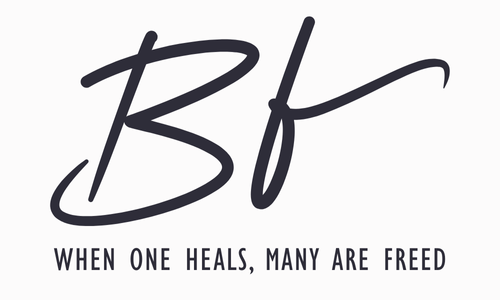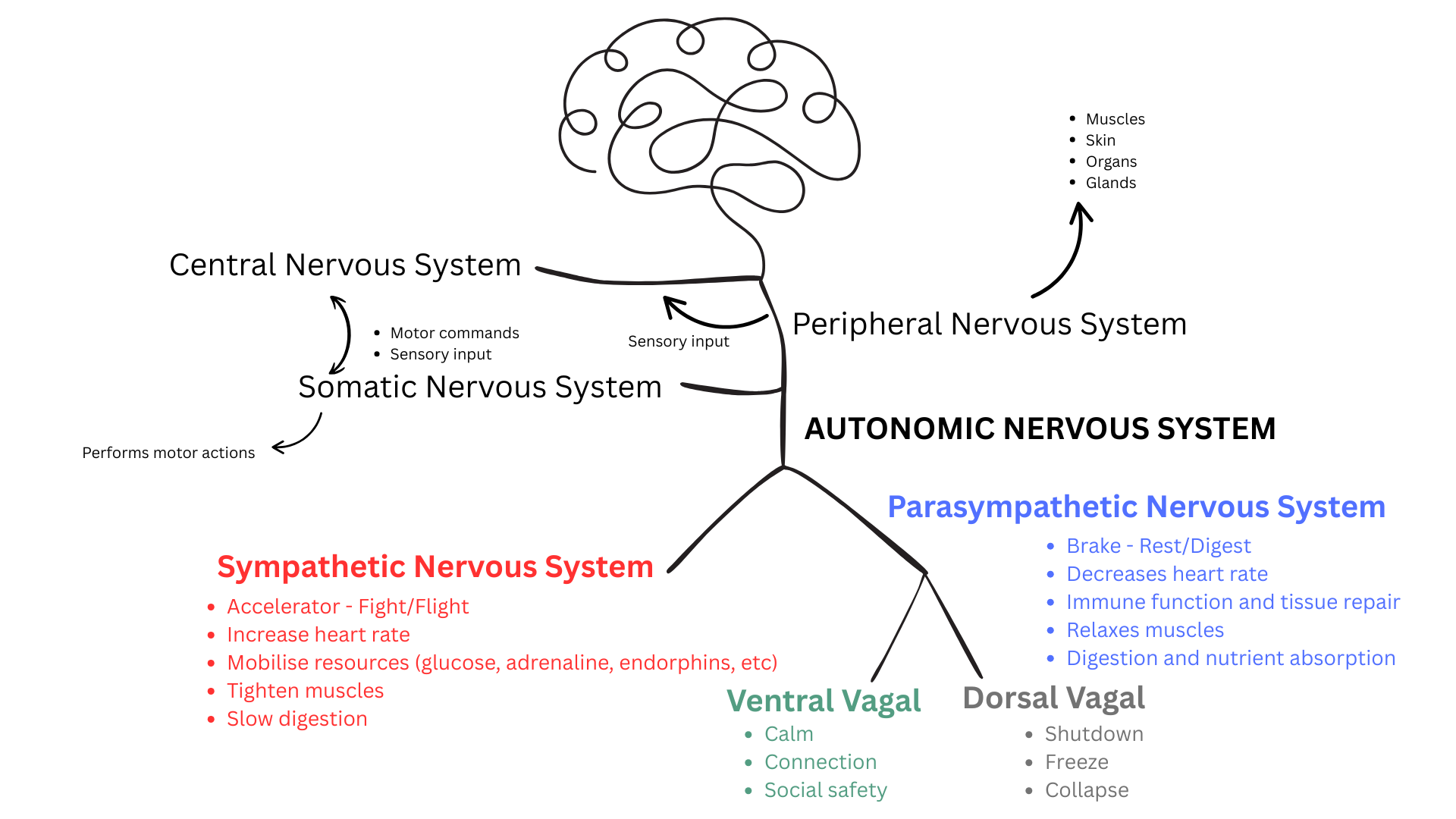I Feel Numb But I’m Always Tired: When Emotional Shutdown Becomes a Way of Surviving
Image Credit: Manfred Neumair
Something new before I start: I wonder how many Linkin Park song names you can find in this week’s blog? You should hopefully get at least one even if you’re not a fan! The answer is at the end of the blog.
Have you ever not cried in response to a situation where it would be acceptable, in fact, expected for you to cry? Or maybe you’re not raging when you’ve been triggered. That should sound perfectly reasonable, but something internally is off. You’re just blank.
Your movement is minimal, not so much as a facial expression, and yet somehow, you’re exhausted.
You go through the motions, get through the day, nod at the right times, even laugh when needed. But inside? There’s a heaviness. Or sometimes nothing at all.
It can feel like being underwater, where everything seems murky, muffled and slow. Maybe even deceptively safe in some strange way. But also disconnected, like feeling lonely, even when you are around people, friends even, almost like life is happening on the other side of a thick and slightly opaque glass wall.
Countless art, poems and songs have been poured into our cultural history to speak about this difficult-to-describe theme, not in the intellectual sense but in the emotional sense.
Image Credit: Craig Adderley
Why This Blog Feels Personal
Growing up, one of my favourite songs was Numb by Linkin Park. Back then, I didn’t have the words for what I felt when I first listened to it. At first it was the melody. I just knew the song fit. Years later relistening to it, I tuned into Chester Bennington’s frustration at difficult life experiences and the people who made it like that.
As I got even older, and as I trained in therapy, the lyrics began to hit differently. The song didn’t sound like rebellion anymore. It sounded like an emotional exhaustion. The kind that builds up when you’ve been surviving, rather than thriving, for years. Bennington died around 4 years before I started training in hypnotherapy but when I learned about the nervous system, it all made sense. I couldn’t imagine how much pain he had been in for so long. His songs gave us some idea, but I bet it felt worse.
I remember, years before I became a therapist, back when I was teaching, I witnessed a student being given a long, stern telling-off, face-to-face, by my head of department. The student didn’t react at all. He stood there, the words seeming to bounce off his face, he stared blankly, almost faint, then he walked away.
And I’ll never forget what my head of department said: “That boy’s head is stuck in a sandbox.”
That metaphor stayed with me. It captured something I hadn’t yet put into words: what it felt like the last time I went numb.
It’s hard to move in sand. You feel frozen. A head stuck in a sandbox? Suffocating, it sounds like. Emotionally drowning.
I knew at a time when I was feeling numb, that there was no external threat because technically, I could breathe. But something was restricting me. I couldn’t think straight. Couldn’t move freely. It felt like I was slowly disappearing, like I was involuntarily pressing mute on my own existence.
In that boy’s case whilst the external threat may have seemed to reside in the teacher’s tone and volume, objectively there was no threat to life, but internally, the body doesn’t really know that.
Numbness doesn’t always look the same person to person. But the theme is familiar:
A flat way of existing.
A body that moves but doesn’t feel.
A mind that functions but doesn’t connect.
Even basic things such as breathing, moving and relating feel heavy and disembodied.
Why do our bodies do this?
Image Credit: RDNE Stock project
The Nervous System Doesn’t Shut Down Without Reason
In my work offering online hypnotherapy and psychotherapeutic counselling for overthinking and anxiety, I often see this shutdown mode as the body’s way of forcing a pause when constant mental activity or emotional strain becomes too much.
Your nervous system is built to keep you alive. When faced with threat, it typically prepares for fight or flight. However, if those options aren’t available because of your environment, past conditioning, or internalised limits it tends to shut down.
This is the dorsal vagal response. It’s like the emergency brake in the end of the nervous system hierarchy. You may recognise it as stonewalling during arguments, feeling distant during intimacy, zoning out during stress, or going emotionally flat in moments that should be meaningful.
In many cases, it’s not a conscious choice. It’s an intelligent system doing what it learned to do to stay safe. You may even feel a strange comfort in this shutdown space, not because it feels good, but because it feels familiar.
And that familiarity might go way back.
Image Credit: Ben Foster Therapy
When Numbness is a Learned Response
If love was unpredictable, if conflict meant danger, or if your needs were often dismissed or shamed, your nervous system adapted. You learned to fawn, freeze, or fold inward. You became careful with your emotions, cautious with your needs, and maybe even distant from yourself. For some people, this early learning shows up later as low self-worth or chronic detachment, two of the patterns that can respond well to hypnotherapy for low self-esteem when approached properly.
You might relate to some of the patterns I described in my previous blog on attachment.
Sometimes, when closeness felt unsafe, the body learns to shut down before intimacy even happens. When you feel shut down, you may also feel that you can’t relax either. And when emotional expression was met with rejection or ridicule, numbness becomes armour. If I was an alien studying humans, I think I’d marvel at what an intelligent survival strategy it is. It makes perfect sense from a biological and emotional standpoint.
If only it didn’t cost so much. If only it didn’t wear us down, quietly, from the inside.
In fact, research shows that when the nervous system shifts into shutdown, it isn’t just emotional, it physically drains you.
Beyond Biology: The Spiritual Shape of Shutdown
The more I’ve worked with my own nervous system, the more I’ve come to see it as something almost spiritual. I used to see it as a bundle of nerves and reflexes, and now like an unborn protective sibling, a bit of a guardian of sorts that’s robbed of its senses to accurately interpret the outside world.
It doesn’t always get it right. Sometimes it pulls the emergency brake when what you actually needed was support (or give support), rather than silence. But it acts with good intentions. And learning to befriend this part of you in order to understand its signals and offer it care instead of criticism can bring you one step closer to the safety, presence, and connection you may have been longing for all along.
Image Credit: Norbert Kundrak
How Therapy Can Help You Feel Again (Gradually)
In counselling and hypnotherapy, we don’t push you to ‘feel your feelings’ all at once. That would be overwhelming. Instead, we work slowly and respectfully with you.
We honour the numbness, not to pathologise it, but to hear what it’s been trying to say.
I offer a therapy that provides:
A calm space to notice what you are feeling without pressure.
Exploration of the moments where you tend to check out, shut down, or even dissociate.
Reconnecting with the earlier version of you who chose stillness to survive the storm.
New and safe experiences of presence and emotional co-regulation.
Here, it’s not about ‘fixing’ but about remembering.
Image Credit: Andrea Piacquadio
You’re Not Broken. You Adapted.
If you’ve been living in shutdown or swinging between detachment and overwhelm, please know that this is not a character flaw. It’s a biological and emotional adaptation. It can make total sense given what you may have been through in your history.
It is possible to feel again, gradually, in safe doses. And in doing so, you might find that underneath the flatness is not just pain, but also sensitivity, depth, and aliveness.
Slowly and gently, you begin the work of breaking the habit by not forcing change, but by understanding the pattern, building safety, and offering yourself something different.
If you relate to any of this, wondering why you can’t relax or your feelings seem switched off, I’d love to hear from you. I offer a calm and confidential space where we can explore your experience together at your pace, and without judgement.
You’re very welcome to book a free 20-minute call if you’d like to see whether working together feels like a good fit.
Answer: 7 songs - Numb; Heavy; In The End; Faint; From The Inside; One Step Closer; Breaking The Habit
Emotional shutdown can be the nervous system’s way of protecting us from shame and overwhelm. If this speaks to you, you may also like:
References
Allen, L. (2025). The Polyvagal Theory: Understanding the Science of Safety and Connection, RCCS. Available at: https://www.rccs.org.uk/post/the-polyvagal-theory-understanding-the-science-of-safety-and-connection. [Accessed: 16 August 2025].
Chen, J. (2017). Chester Bennington on Depression: My Mind ‘Is Like a Bad Neighborhood’, Rolling Stone. Available at: https://www.rollingstone.com/music/music-news/chester-bennington-on-depression-my-mind-is-like-a-bad-neighborhood-253031/. [Accessed: 16 August 2025].
Evans, A., Mascaro, J., Kohn, J., Dobrusin, A., Darcher, A., Starr, S., Craighead, L., & Negi, L. (2019). Compassion Meditation Training for Emotional Numbing Symptoms Among Veterans with Post-Traumatic Stress Disorder. The Journal of Alternative and Complementary Medicine. 25.
Foster, B. (2025a). Therapy for anxiety: Beyond labels. Ben Foster Therapy. Available at: https://www.benfostertherapy.com/blogs/therapy-for-anxiety-beyond-labels. [Accessed: 16 August 2025].
Foster, B. (2025b). Why Can’t I Relax? Uncovering Hypervigilance and How to Feel Safe. Ben Foster Therapy. Available at: https://www.benfostertherapy.com/blogs/why-cant-i-relax. [Accessed: 26 July 2025].
Foster, B. (2025c). The Pattern You Can’t See: Why Do I Fall For People Who Hurt Me? Ben Foster Therapy. Available at: https://www.benfostertherapy.com/blogs/how-to-stop-overthinking-without-cutting-off-your-head. [Accessed: 09 August 2025].
Wekenborg, M.K., Schwerdtfeger, A., Rothe, N., Penz, M., Walther, A., Kirschbaum, C., Thayer, J.F., Wittling, R.A., & Hill, L.K. (2022). Determining the direction of prediction of the association between parasympathetic dysregulation and exhaustion symptoms. Scientific Reports. 12, 10648.







